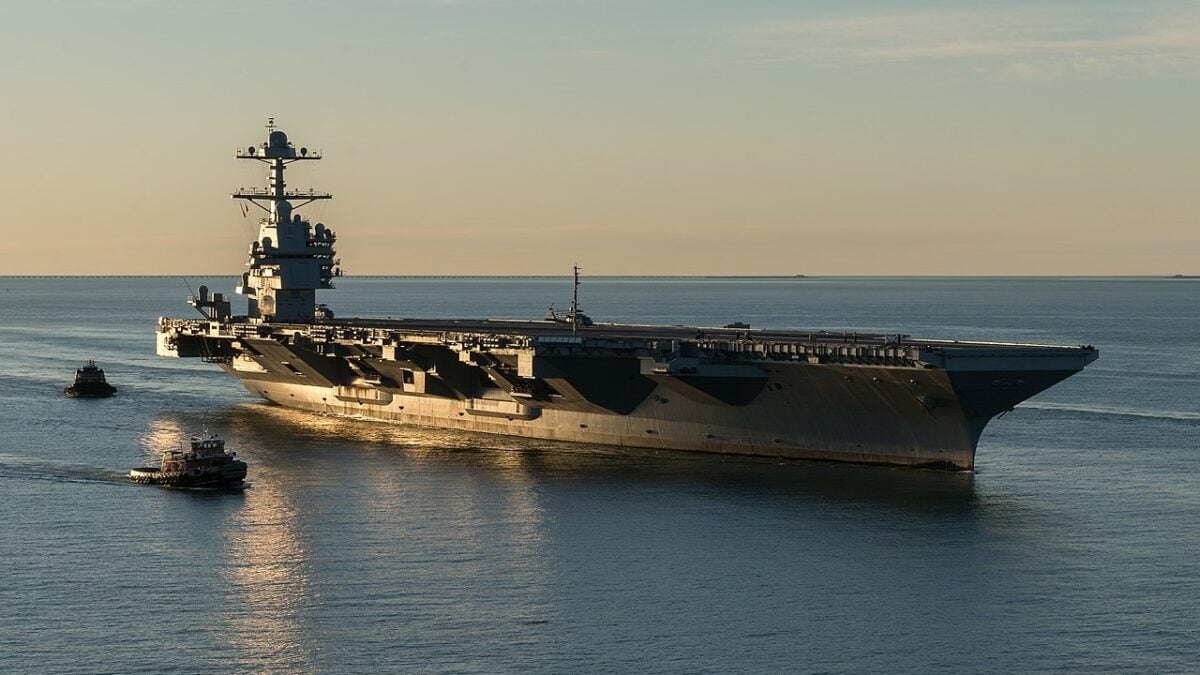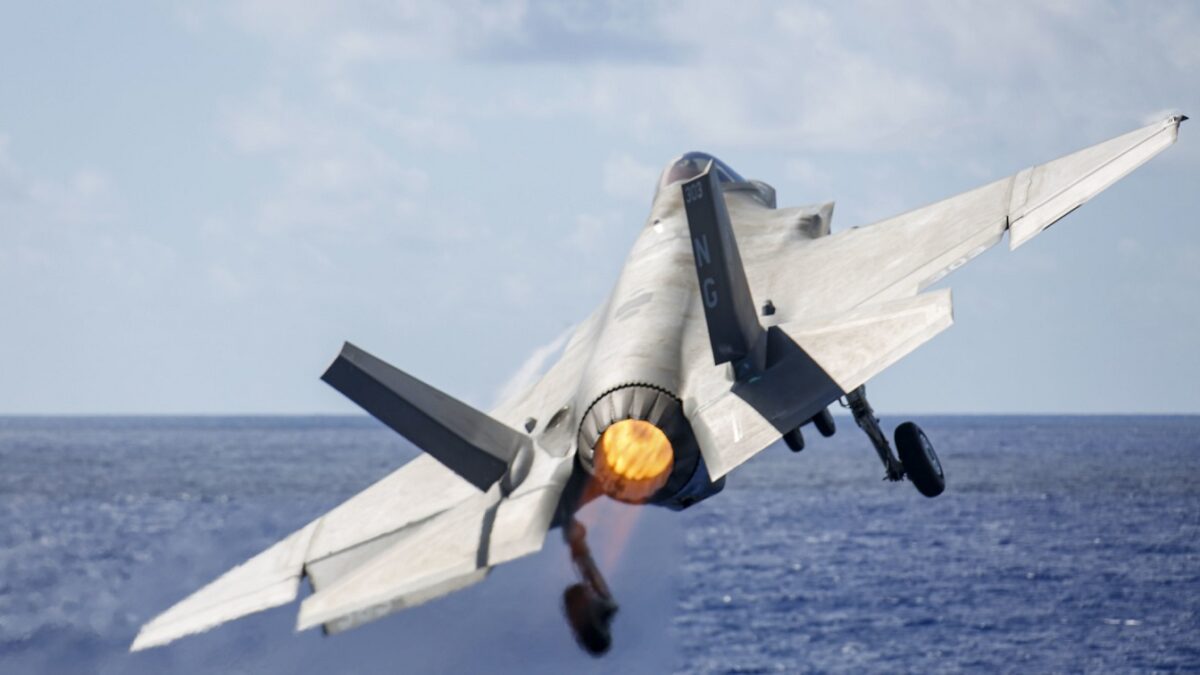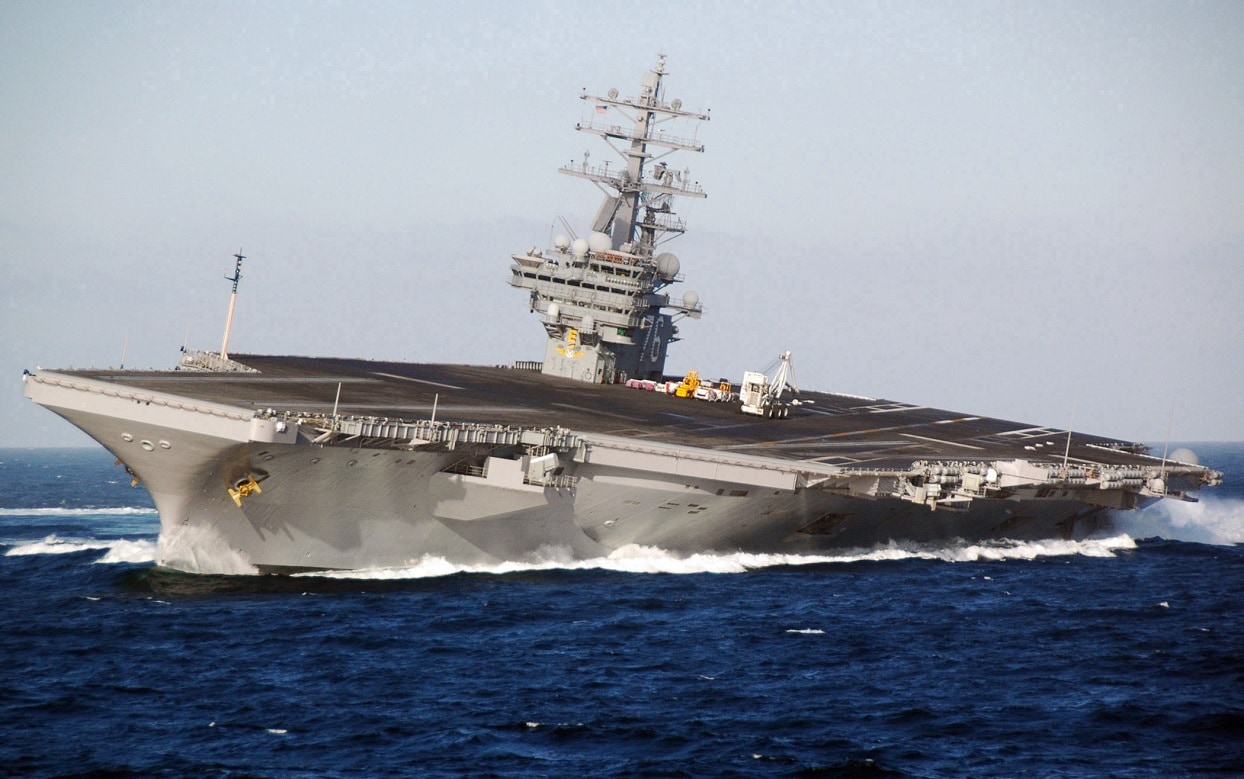The debate about whether U.S. Navy aircraft carriers are obsolete or not seems to be never-ending. The reason the debate was kicked off in the first place centers around the creation of China’s building of thousands of new ballistic and cruise missiles, many of which would be used to attack U.S. naval warships in any sort of conflict over Taiwan or the South China Sea. The most infamous of those missiles is the DF-26B, which has the range and accuracy to range to terrify any military that has to go up against it.

From 2017 – The aircraft carrier Pre-Commissioning Unit (PCU) Gerald R. Ford (CVN 78) pulls into Naval Station Norfolk for the first time. The first-of-class ship – the first new U.S. aircraft carrier design in 40 years – spent several days conducting builder’s sea trails, a comprehensive test of many of the ship’s key systems and technologies. (U.S. Navy photo by Matt Hildreth courtesy of Huntington Ingalls Industries/Released)
A few months back, news circulated that Russia was developing an anti-ship ballistic missile, and it was reportedly similar in design to China’s Dong Feng-26 (DF-26), the road-mobile, two-stage solid-fueled intermediate-range ballistic (IRBM) platform first unveiled during a military parade in September 2015.
DF-26B, Explained
The Chinese People’s Liberation Army (PLA) has long touted the capabilities of the hypersonic DF-26B, which has been described as a “carrier killer” for its ability to strike an adversary’s warship from an extreme distance with great accuracy. The two-stage solid-fuel DF-26 missile has a reported range of 4,000km (2,485 miles) and it can be used in both conventional and nuclear strikes against ground as well as naval targets.
Its mobile launcher can carry a 1,200 to 1,800 kg nuclear or conventional warhead, and as it could directly strike a target such as the U.S. territory of Guam in the event of war, it has been seen as a considerably formidable weapon. More ominously, the naval variant DF-26B has been described as a “carrier killer” due to how it could be used to target the U.S. Navy’s fleet of Nimitz– and Ford-class nuclear-powered supercarriers. It is believed that the missile has internal navigation systems that utilize the Chinese BeiDou satellite navigation system, which could enable the warhead to have an accuracy of less than 100 meters, and possibly even less than 10 meters.
Its mobile launcher is based on the Taian HTF5680A1 special wheeled chassis with a 12×12 configuration. According to Chinese sources, the missile measures 14 m long, 1.4 m in diameter, and it has a launch weight of 20,000 kg (44,000 pounds).
The DF-26B is reported to be in service with the PLA’s Second Artillery Corps, including the 625 Brigade in Jianshui, Yunnan Province, the 626 Brigade at Qingyuan, Guangdong Province, and the 666 Brigade at Xinyang.
China last conducted a test of the DB-26B in June 2021. Chinese sources claim that it is the most advanced IRBM operational today.
Banned by Treaty?
What makes the BF-26B especially unique is that it is a dual-capable missile, with a range and class banned by the Intermediate-range Nuclear Forces Treaty (IRNFT) signed by the United States and the Soviet Union near the end of the Cold War. In fact, the United States and Russia were strictly prohibited from actually developing missiles of the class due to the 1987 missile treaty.

PHILIPPINE SEA (May. 13, 2022) An F-35C Lightning II assigned to the “Black Knights” of Marine Fighter Attack Squadron (VMFA) 314 launches from the Nimitz-class aircraft carrier USS Abraham Lincoln (CVN 72). The Abraham Lincoln Carrier Strike Group is on a scheduled deployment in the U.S. 7th Fleet area of operations to enhance interoperability through alliances and partnerships while serving as a ready-response force in support of a free and open Indo-Pacific region. (U.S. Navy photo by Mass Communication Specialist 3rd Class Michael Singley) 220513-N-MM912-1002
As a result, the only comparable platform is the Indian Agni V, but Chinese sources have long maintained the superiority of their weapon.
The issue was so great – as China was never invited to join the agreement – that the United States went so far as to withdraw from the treaty during the Trump administration citing Russia’s failure to comply with treaty obligations as well as Beijing’s deployment of such weapons as a justification.
A Senior Editor for 1945, Peter Suciu is a Michigan-based writer who has contributed to more than four dozen magazines, newspapers and websites. He regularly writes about military hardware, firearms history, cybersecurity and international affairs. Peter is also a Contributing Writer for Forbes.

